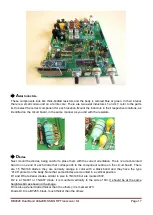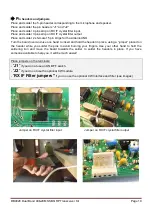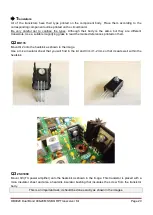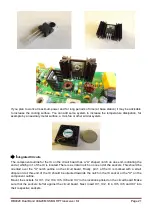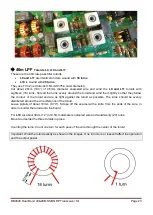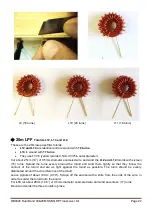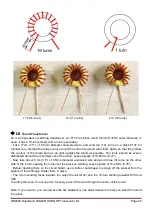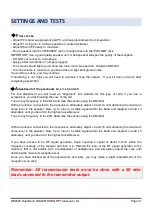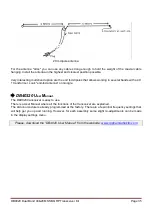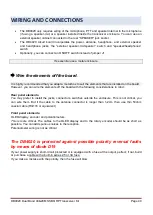
DB4020 Dual Band 40&20M SSB QRP Transceiver Kit
Page 31
SETTINGS AND TESTS
F
irst checks
- Adjust P2 (carrier suppression) and P5 (volume potentiometer) to mid-position.
- Adjust P1 (mic gain) to minimum position (counterclockwise).
- Adjust P6 and P4 nearly to maximum.
- Plug a speaker into the "SPEAKER" jack or headphones into the "PHONES" jack.
IMPORTANT: Use a good quality speaker unit. A bad speaker will spoil the quality of the reception.
- DO NOT yet connect a microphone.
- Apply power (remember J1 jumper plugged).
- The screen should light up and show the main menu. See section: Using the DB4020.
- Turn the volume to maximum; you should hear a light background noise.
If everything is okay, you may continue.
If something is not right, you will need to examine it
(see the section, “If your kit does not work after
completing assembly").
A
djustment of the passband, L2, L3, L4 and L5
For this adjustment you will need an “alignment” tool suitable for this type of coils; if you use a
screwdriver, you risk breaking the core of the coil.
Tune to any frequency in the 40m band (see the section using the DB4020).
With an antenna connected to the transceiver, alternately adjust L2 and L3 until obtaining the maximum
noise level in the speaker. Now, try to tune in a stable signal within the band and readjust L2 and L3
alternately until you hear it at the highest possible level.
Tune to any frequency in the 20m band (see the section using the DB4020).
With an antenna connected to the transceiver, alternately adjust L4 and L5 until obtaining the maximum
noise level in the speaker. Now, try to tune in a stable signal within the band and readjust L4 and L5
alternately until you hear it at the highest possible level.
If you have access to an RF signal generator, begin injecting a signal of about 5-10uV within the
frequency coverage of the receiver and tune it in. Reduce the level of the RF signal generator to the
minimum that is still audible with a loudspeaker or headphones, and alternately adjust the coils until
obtaining the maximum reception level.
Once you have finished all of the adjustments and tests, you may make a slight readjustment of the
reception if you wish.
Remember: All transmission tests must be done with a 50 ohm
load connected to the transmitter output.

